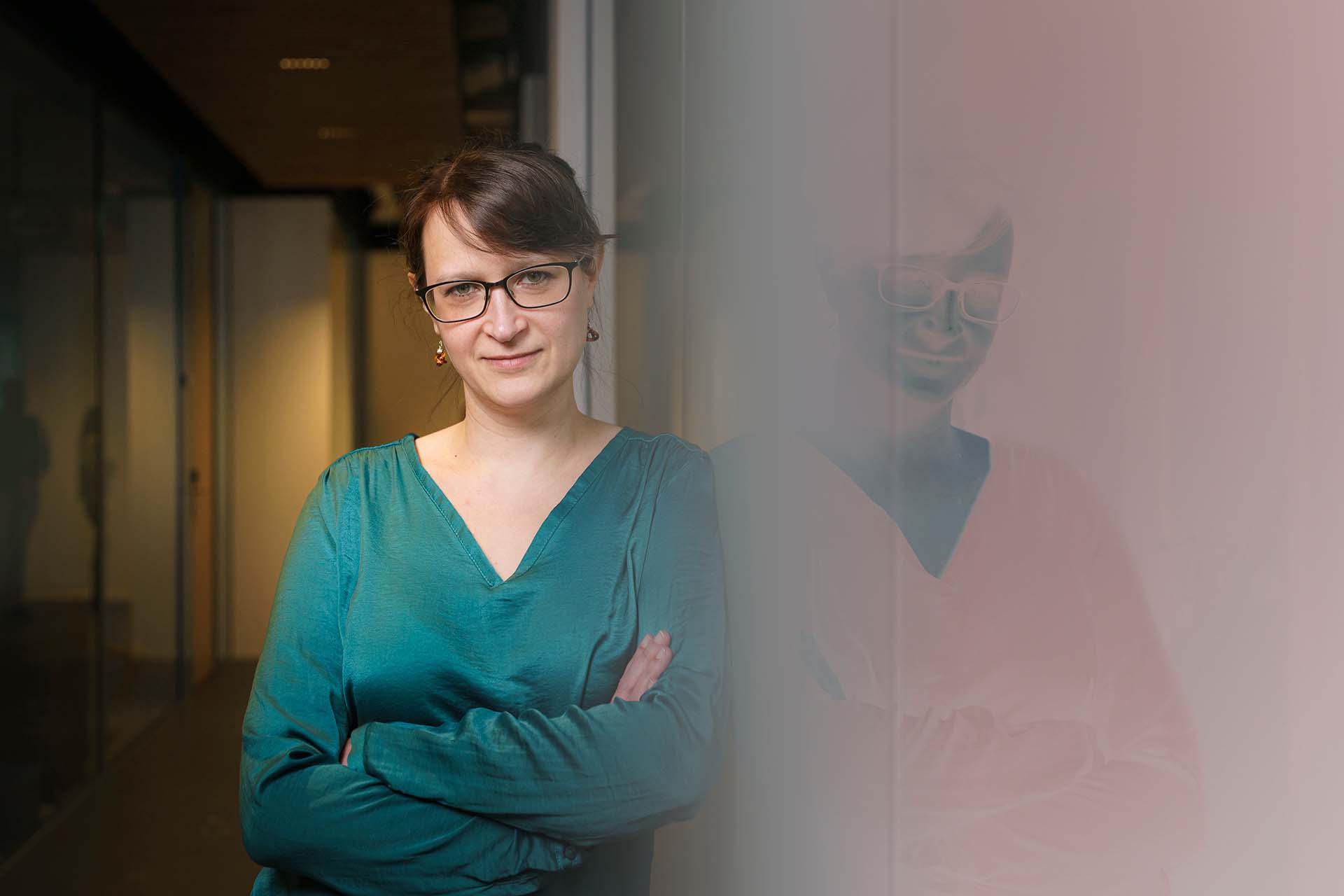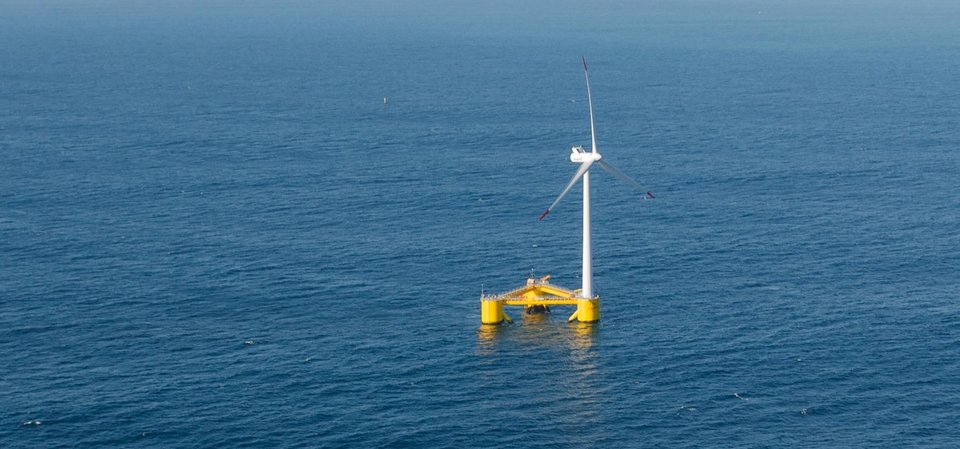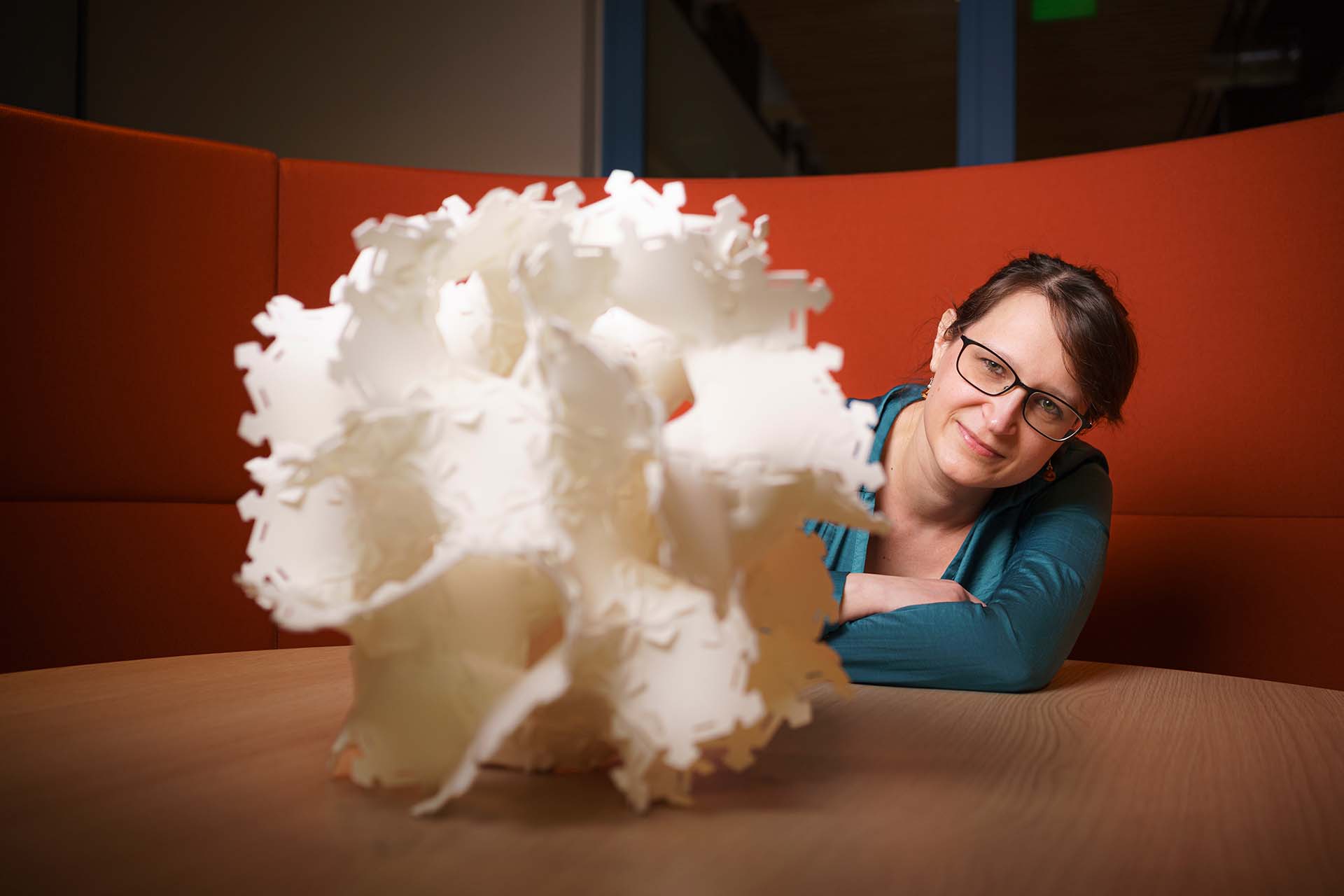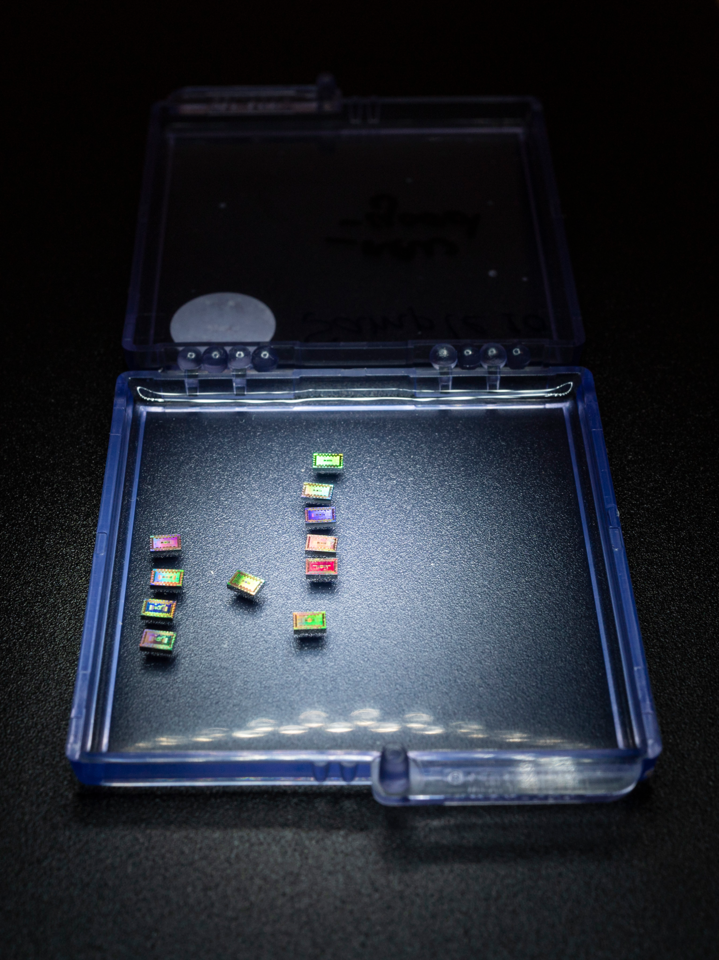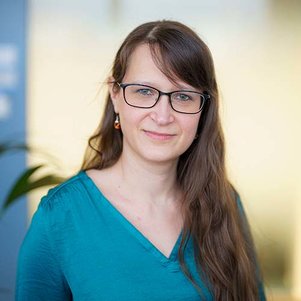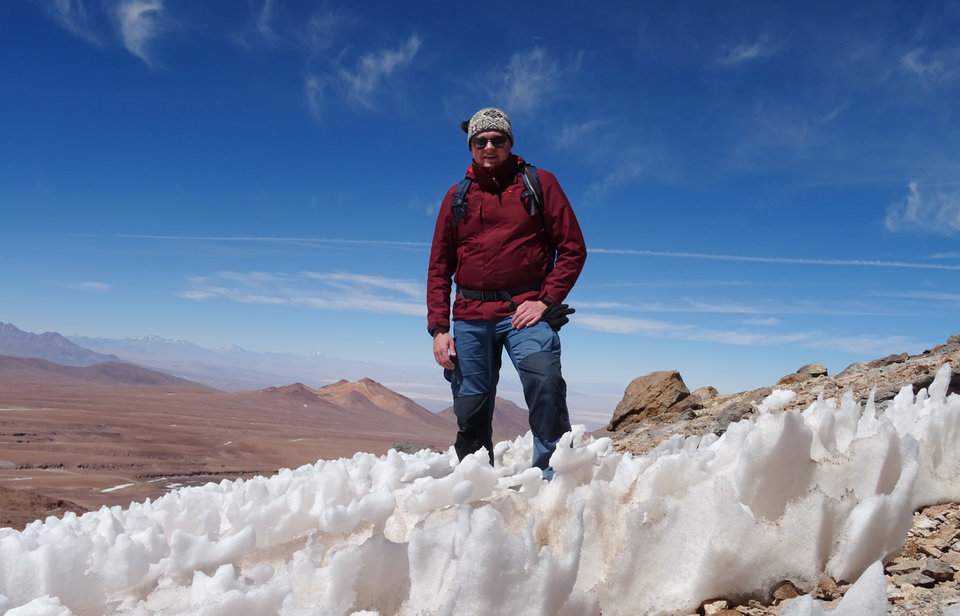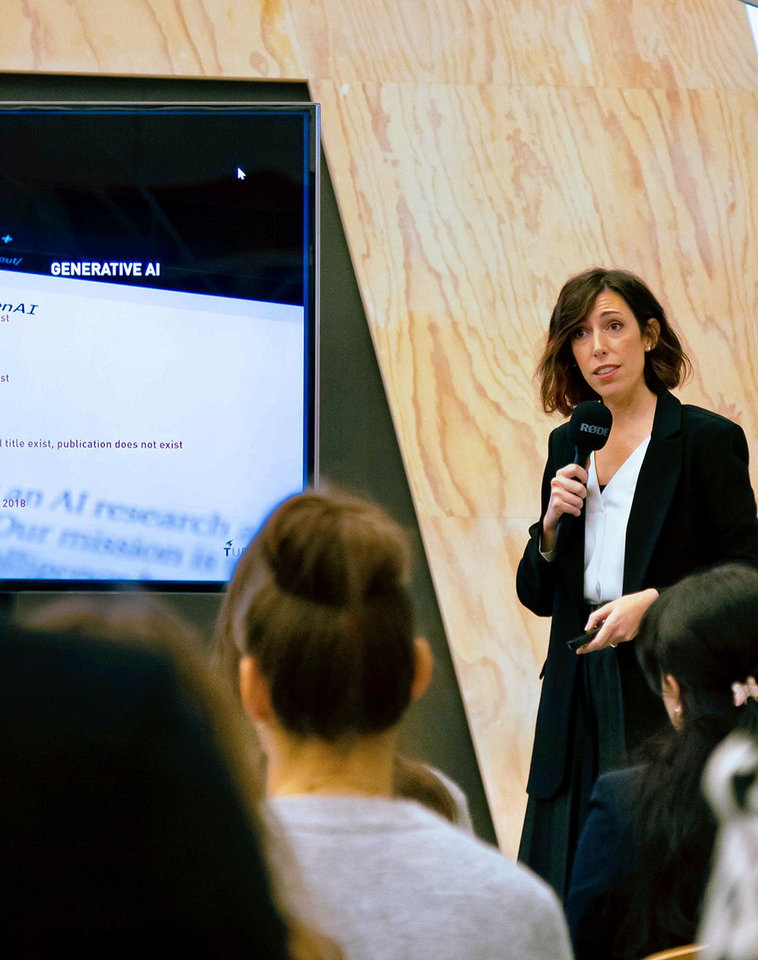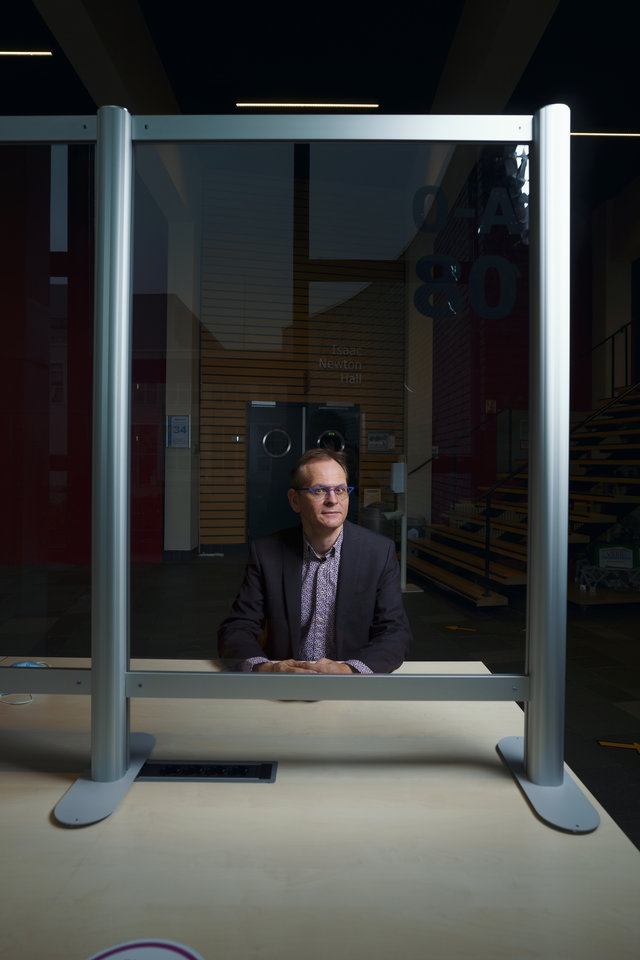
Inverse modelling – for improved medical imaging and much more
Cause-and-effect means that when you know a patient’s anatomy, it’s easy to predict what their X-ray will look like. The opposite is mathematically much more challenging – finding the causal factors behind a set of observations. Hanne Kekkonen specialises in the mathematics used to solve such inverse problems. Applications include medical imaging, climate change, the evolution of competing languages, materials science and many more.
We may not think the mathematics we learned in high school was simple, but at least there was always a unique solution to the problems. Hanne Kekkonen (tenure track assistant professor at the Delft Institute of Applied Mathematics (DIAM)) says that inverse problems are different: “With these problems there is no unique correct solution, just estimates of the so-called ‘ground truth’, which we can’t observe. Inverse problems arise whenever we have only indirect measurements of an object of interest, such as X-rays from various directions that are used to reconstruct the 3D anatomy of a patient. Such indirect measurements are always imperfect. They are noisy, and often only provide partial information. Successfully solving inverse problems therefore requires specially designed algorithms that can tolerate errors in the measured data.”
Inverse problems have no unique correct solution, just estimates of unobservable ‘ground truth’
Hanne is also interested in uncertainty quantification, which aims to assess the reliability of such algorithms’ outputs. An example is the weather forecast: rather than predicting a Thursday temperature of 11 degrees, a forecast might indicate the expected temperature in Delft five days from now, giving a range between 10 and 13 degrees.
Similar solutions (to a mathematician)
Hanne explains that the nice thing about inverse problems is that the same method can be used to solve very different problems, even though they sound as if they have nothing to do with each other: “The equations describing how heat dissipates in, say, a metal rod, are similar to those used in describing how animals spread in a certain area, or how competing dialects evolve.”
Likewise, for her, reconstructing a 3D CT-scan from many X-rays isn’t that different from profiling the ozone layer using starlight travelling through it, or from using the seismic waves of earthquakes to resolve the internal structure of earth. “A core challenge in my research is extracting maximum information from only a limited number of noisy, indirect measurements. Looking at medical diagnostic imaging, for example, this may allow a reduction in a patient’s potentially harmful radiation exposure. In other cases, such as industrial process monitoring, we may just have to make do with the limited amount of data we have.”
Passionately curious
After having obtained her master’s degree and PhD in Finland, Hanne took two postdoc positions in the United Kingdom. Then, wanting to stay in Europe, she took a couple of indirect measurements herself – asking how colleagues in the field experienced various universities: “I’m happy to have chosen TU Delft. It has a very collaborative atmosphere, which I think can lead to better results.”
Curiosity is Hanne’s driving force. At primary school, she would often arrive late because she was distracted by a slug or a frog. “I am passionately curious about most things in the world. To some extent, the COVID lockdown with its few distractions has been a very productive period. On the other hand, just wandering around, having my mind travel in directions that have nothing to do with mathematics, sometimes yields fresh and unexpected insights.”
With inverse problems, the same method can solve very different problems
AI for materials science
Research in inverse problems ranges from extremely theoretical to extremely applied. “I do like there being actual applications, but I have to admit that I am mostly in it for the pureness of the math.” One of Hanne’s more applied lines of research relates to her appointment as co-head of the SLIMM AI-lab. “SLIMM is a collaboration with researchers from materials science, creating high-tech materials to be used in construction, transport and the energy transition.” The lab’s goal is to predict prospectively the behaviour of new materials. For example, will it carry a certain amount of weight? Can it bend a certain way without breaking? Hanne said that existing models for such virtual testing can take a month to run: “We want to use so-called model-driven machine learning to maybe replace these slow models with something almost as good but much faster. Unlike most machine learning, we hope to create models that are not black boxes, allowing us to quantify uncertainties.”
Outreach to early adolescents
Hanne would love it if more people could experience the joy of mathematics. As far as she is concerned, this applies also to men, but especially to women. “When I started my studies, we may have had more women than men. But by the time I was on my master’s courses that was totally changed. If I entered a room and saw a woman sitting, I would probably check the door to see if I was in the right place.” She is involved in outreach herself and would like to reach kids at a young age: “Universities put a lot of effort into marketing themselves to people in the final years of high school, but by then they have already formed an idea about liking or disliking maths. To ensure lots of good applications, I think we need to raise their interest in maths at a much earlier age. Making a long story short, if you are a curious person and would like to make an impact in medical imaging or pretty much any other field, come and study math!”
